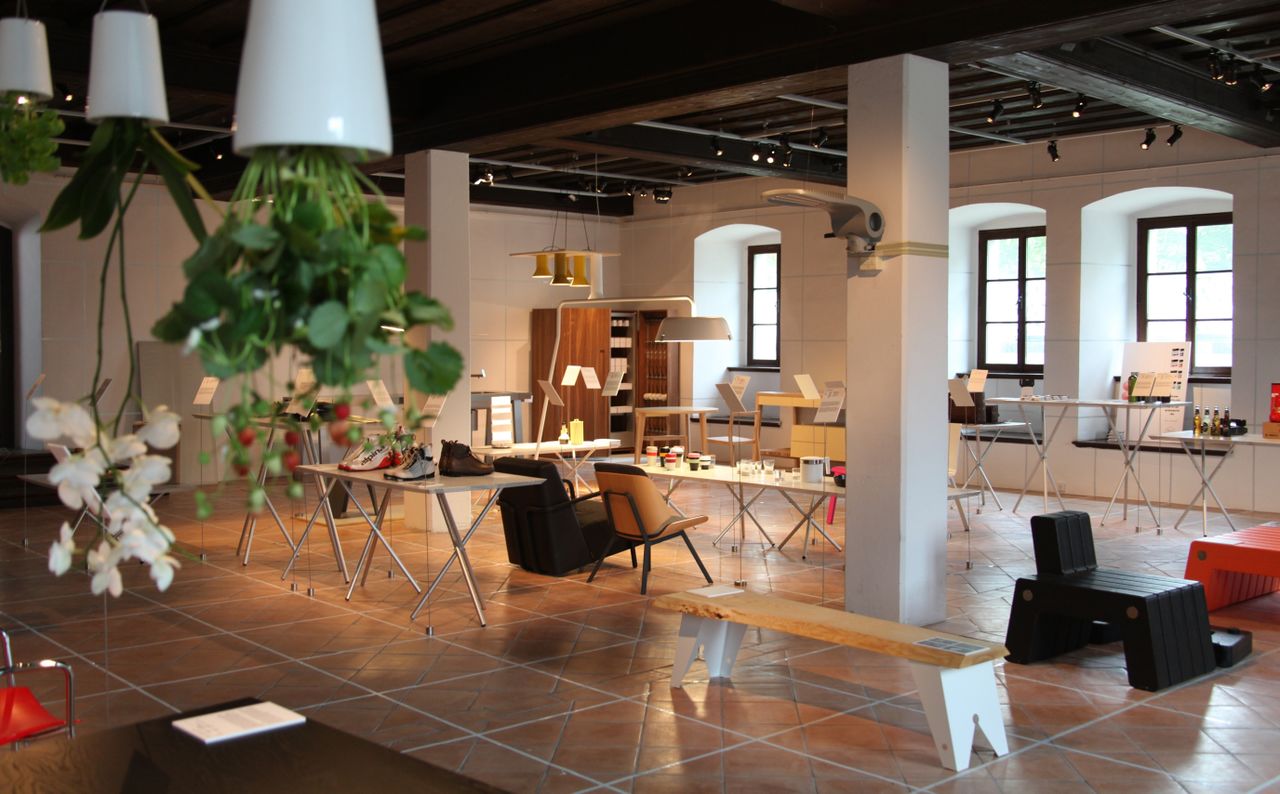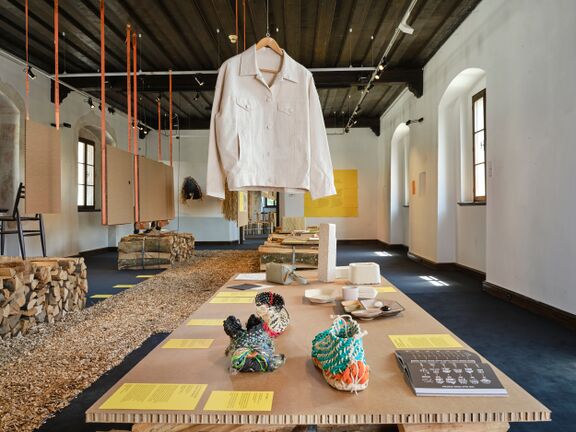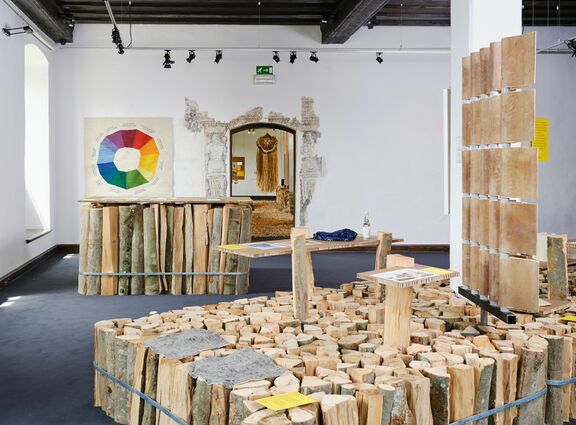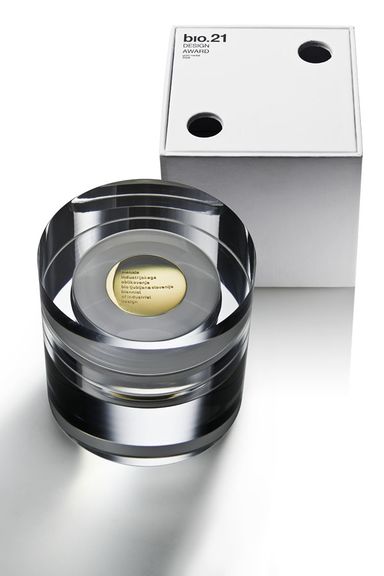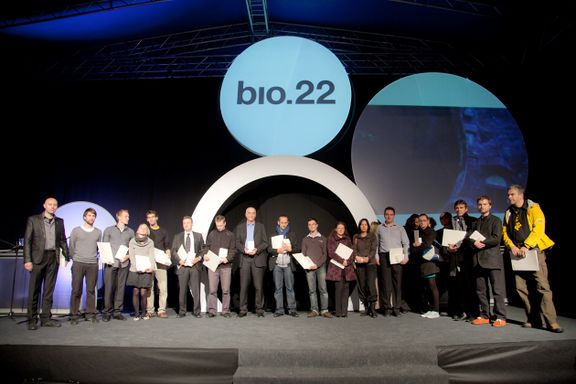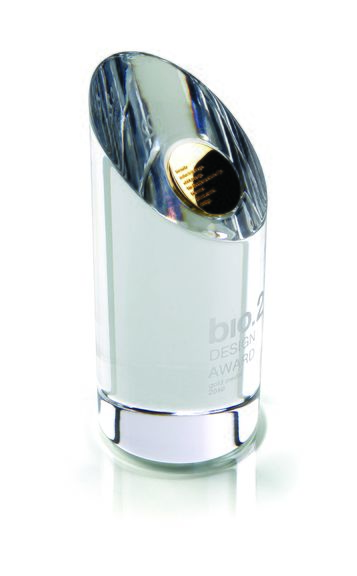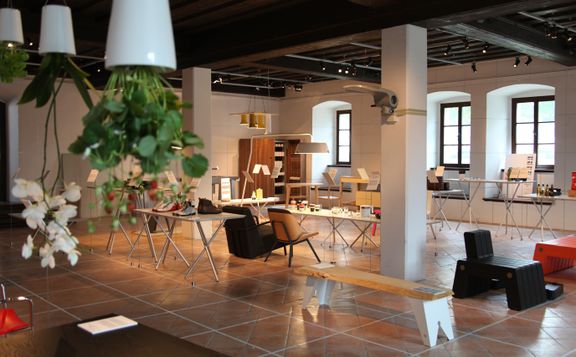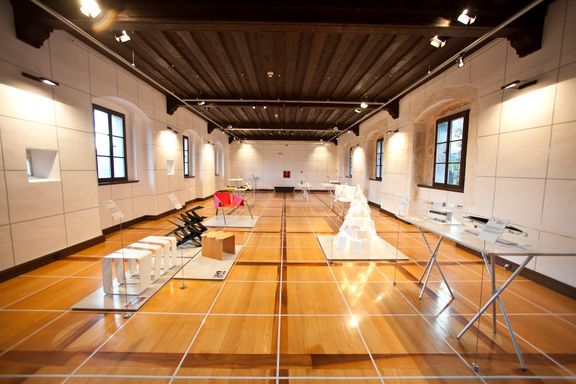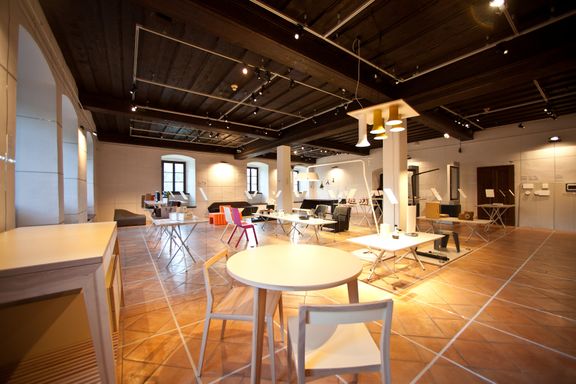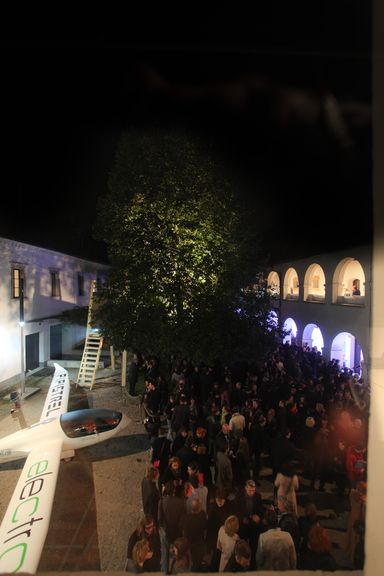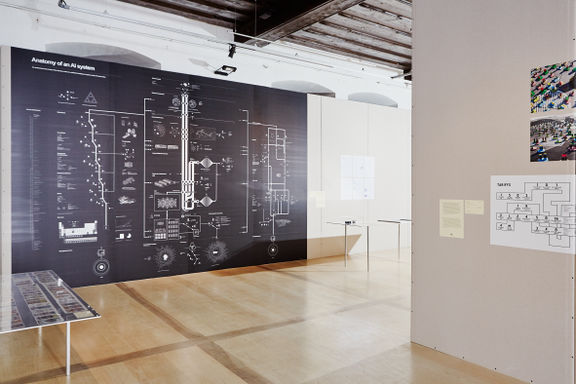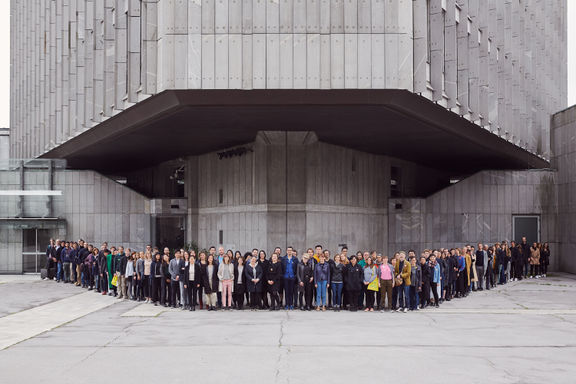Difference between revisions of "Biennial of Design (BIO)"
(English proofreading 1; PROOFREAD DONE) |
(deleted TOPROOFREAD) |
||
| Line 1: | Line 1: | ||
{{Article | {{Article | ||
| − | | status = | + | | status = PHOTO |
| maintainer = Tea Pristolič | | maintainer = Tea Pristolič | ||
}} | }} | ||
Revision as of 10:54, 12 May 2014
-
to
28 Sep 2018
10 Oct 2018
The exhibition of projects developed for the Cultural Centre of European Space Technologies (KSEVT) by the AA nanotourism Visiting School in cooperation with the Biennial of Design (BIO), presented by Jakob Travnik, supported by the Slovenian Culture and Information Centre, Vienna (SKICA) (Embassy of the Republic of Slovenia Vienna),
at the Vienna Design Week
-
to
19 Sep 2018
23 Sep 2018
The exhibition of four projects developed for the Cultural Centre of European Space Technologies (KSEVT) in the period 2014 - 2016 by AA nanotourism Visiting School in cooperation with the Biennial of Design (BIO) and the projects' presentation by Jakob Travnik in the Biodesign Here and Now program, supported by the Embassy of the Republic of Slovenia London,
at the London Design Festival
-
to
8 Apr 2012
11 Apr 2012
Curator Špela Šubic from Museum of Architecture and Design / Biennial of Design (BIO) at the Holon Design Week, supported by the Embassy of the Republic of Slovenia Tel Aviv
Mission
The Biennial of Design is a cultural event directly linked to various sectors, namely, those of industry, architecture, economy, design, and education, especially as linked to innovation and development. In 2014, for its 50th anniversary, a completely new curatorial practice was implemented: the 24th Biennial of Design (BIO 50) has taken a collaborative approach, considering actual changes in the way people nowadays co-work and co-create. A system of awards is therefore no longer granted for products, but for collaboration, its process and the outcomes.
Involved in a given collaborative process over the course of six months, international and Slovene mentors and participants are discussing solutions through several thematic fields: Affordable Living, Knowing Food, Public Water Public Space, Walking the City, Hidden Crafts, The Fashion System, Hacking Households, Nanotourism, Engine Blocks, Observing Space, and Designing Life. The outcome of the projects will be presented at the biennial, while the process is continuously updated, documented, and distributed through the BIO 50 website and social media channels.
In addition to the main BIO exhibition, many accompanying events take place during the period of the biennial: exhibitions, lectures, panel discussions, creative workshops for children and young people, and educational workshops for adults, among others. The BIO 50 main show will be accompanied by an exhibition on the biennial's fifty year history.
Background
The Biennial of Industrial Design was founded as an exhibition which also demonstrated the capacity of the economy from the point of view of design. In the past, the biennial exhibitions were held at various locations in Ljubljana. In 2004 BIO 19 was held for the first time in the vast exhibition space at the Fužine Castle. In 2012 the biennial acquired a shorter name, the Biennial of Design, and was curated by Margriet Vollenberg and Margo Konings (Studio Organisation in Design).
One of the few international biennial exhibitions dedicated to showcasing industrial, product, and graphic design work selected by professional design institutions, BIO has undergone a significant transformation in 2014, under the guidance of Belgian critic and curator Jan Boelen. From awarding and exhibiting products it has evolved into a much larger and multi-layered field of collaboration, investigation, innovation – an experiment, appreciating interconnection and the process itself.
Recent editions
The 20th Biennial of October 2006 presented over 350 exhibits by designers from 17 countries (Slovene designers contributed 111 works), including Austria, Belgium, Denmark, Finland, France, Croatia, Italy, Japan, China, Germany, the Netherlands, Slovakia, Slovenia, Spain, and Sweden. Works were presented in three groups: Regular industrial products, Visual messages, and Design projects. The venues of the biennial varied (in the centre of the city, at the castle, etc.). A fringe programme was also organised, including panels, exhibitions by foreign designers, presentations by publishing houses, and meetings of designer organisations, held in different cities across Slovenia.
The 21st Biennial of Industrial Design in 2008 was modernised in many ways. The BIO awards were redesigned, and the entire event received a new corporate identity, designed by Gigodesign, one of the award-winners of the 20th Biennial. For the first time in the history of the BIO an international Selection Committee examined all entries equally, be it industrial design and visual communications items or design concepts. The online registration for BIO 21 was possible for the first time – out of 421 submitted works only 126 works from 18 countries were exhibited. In addition to the main exhibition, an interesting accompanying programme took place.
In October 2010 the BIO 22 presented works exhibited in three groups: Products, Product graphics and information design, and Concepts. An accompanying exhibition Alvar Aalto, timeless expression was organised by the BIO Secretariat, the Alvar Aalto Foundation, and the Embassy of Finland in Slovenia at the National Museum of Slovenia - Metelkova.
The BIO 23 set in 2012 addressed "Design Relations", crossovers between culture and commerce, crafts and industry, digitalisation, globalisation, and design.
Awards
Prior to 2014, the Biennial of Design bestowed several awards: the (BIO Gold Medal, the BIO Quality Concept Award, the BIO Honourable Mentions, and the BIO Award for a Student Work). These past award winners represent a recognition of quality in design and all awarded works of the Biennial of Design are included in the international design collection of the Museum of Architecture and Design. This traditional model was replaced in 2014 by the one and only Award for Best Collaboration, selected by an international jury and presented at the opening ceremony.
International cooperation
The BIO Secretariat consolidated its orientation and independence in 1977 when it became an associate member of the International Council of Societies of Industrial Design (ICSID). Furthermore it obtained the membership in the Bureau of European Designers' Associations (BEDA). It is also an active participant in the International Council of Graphic Design Associations (ICOGRADA) and one of the partners in the SEE project (Sharing Experience Europe: Policy Innovation Design).
In 2008 the Biennial of Industrial Design expanded its international promotion and cooperation to incorporate some of the most important international design organisations. BIO 21 was therefore advertised in all countries of the European Union and also in the USA, Australia, New Zealand, China, South Africa, and Japan. During the exhibition, BIO 21 hosted a presentation of "Design Management Europe Award", attended by the most notable experts on design and management in the world.
In autumn 2009 the travelling exhibition of BIO 21 award-winners was showcased in Tallin, Estonia, in cooperation with the Estonian Association of Designers (EDL) as part of the Design Night 2009 event, and in Riga, Latvia, in cooperation with the Design Information Center (DIC) as part of the Riga International Young Designers Biennial. The exhibition also showed the selection of Slovene works that were on display at the 21st Biennial of Industrial Design.
See also
- BIO Gold Medal
- Museum of Architecture and Design
- Museum of Architecture and Design Library
- Fužine Castle
External links
- BIO website (in English and Slovenian)
- BIO 50, the presentation of the 24th BIO on VideoLectures.Net
- BIO 20 highlights video
- BIO 21 highlights video
International networks
International projects




